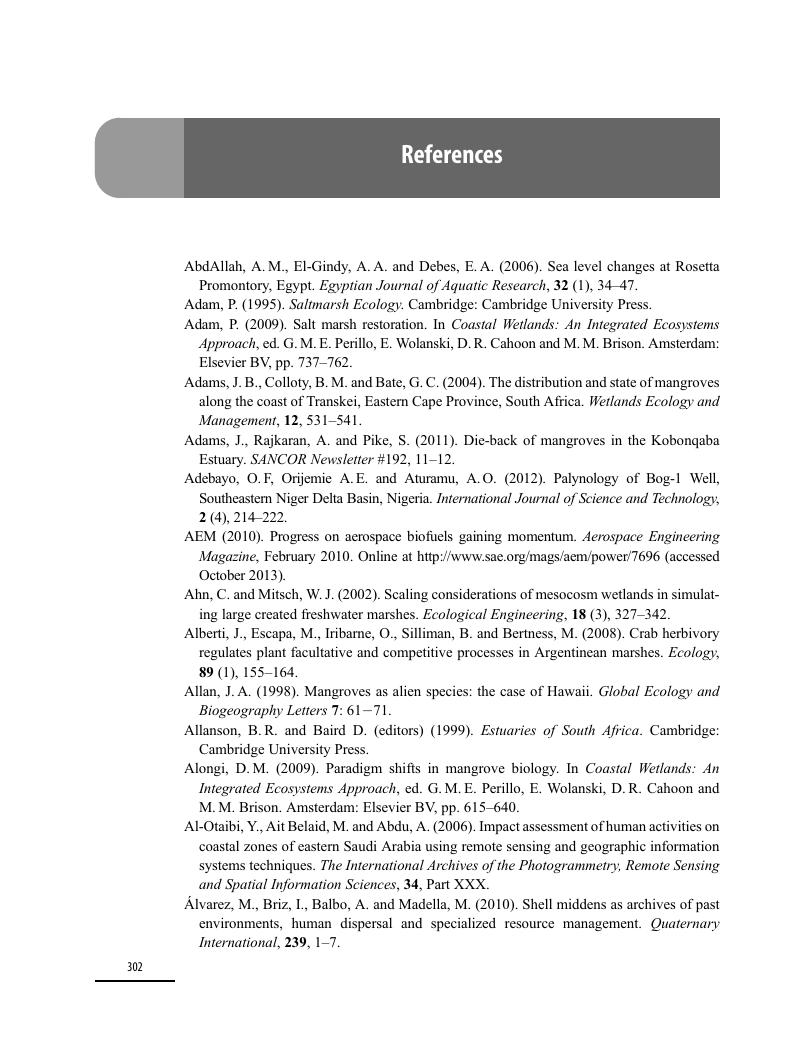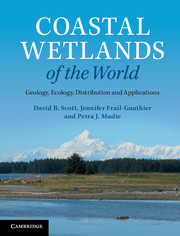Book contents
- Frontmatter
- Contents
- Preface
- List of acronyms and abbreviations
- 1 Introduction: what is covered in this coastal wetlands book?
- 2 Physical aspects: geological, oceanic and climatic conditions
- 3 Zonations and plants: development, stressors and adaptations
- 4 Animals in coastal wetlands: zonation, adaptations and energy flow
- 5 Human intervention causing coastal problems
- 6 Coastal wetlands worldwide: climatic zonation, ecosystems and biogeography
- 7 Examples of North American salt marshes and coastal wetlands
- 8 Examples of South American coastal wetlands
- 9 Africa: selected marsh and mangrove areas
- 10 Europe and Asia: a view of what remains
- 11 Australasia: wetlands of Australia and New Zealand
- 12 Applications in geological monitoring: paleoseismology and paleoclimatology
- 13 Applications in conservation of plant biodiversity and agriculture
- 14 Using mesocosms as a way to study coastal wetlands
- 15 Conclusions and future directions
- References
- Index
- Plate section
- References
References
Published online by Cambridge University Press: 05 July 2014
- Frontmatter
- Contents
- Preface
- List of acronyms and abbreviations
- 1 Introduction: what is covered in this coastal wetlands book?
- 2 Physical aspects: geological, oceanic and climatic conditions
- 3 Zonations and plants: development, stressors and adaptations
- 4 Animals in coastal wetlands: zonation, adaptations and energy flow
- 5 Human intervention causing coastal problems
- 6 Coastal wetlands worldwide: climatic zonation, ecosystems and biogeography
- 7 Examples of North American salt marshes and coastal wetlands
- 8 Examples of South American coastal wetlands
- 9 Africa: selected marsh and mangrove areas
- 10 Europe and Asia: a view of what remains
- 11 Australasia: wetlands of Australia and New Zealand
- 12 Applications in geological monitoring: paleoseismology and paleoclimatology
- 13 Applications in conservation of plant biodiversity and agriculture
- 14 Using mesocosms as a way to study coastal wetlands
- 15 Conclusions and future directions
- References
- Index
- Plate section
- References
Summary

- Type
- Chapter
- Information
- Coastal Wetlands of the WorldGeology, Ecology, Distribution and Applications, pp. 302 - 338Publisher: Cambridge University PressPrint publication year: 2014



